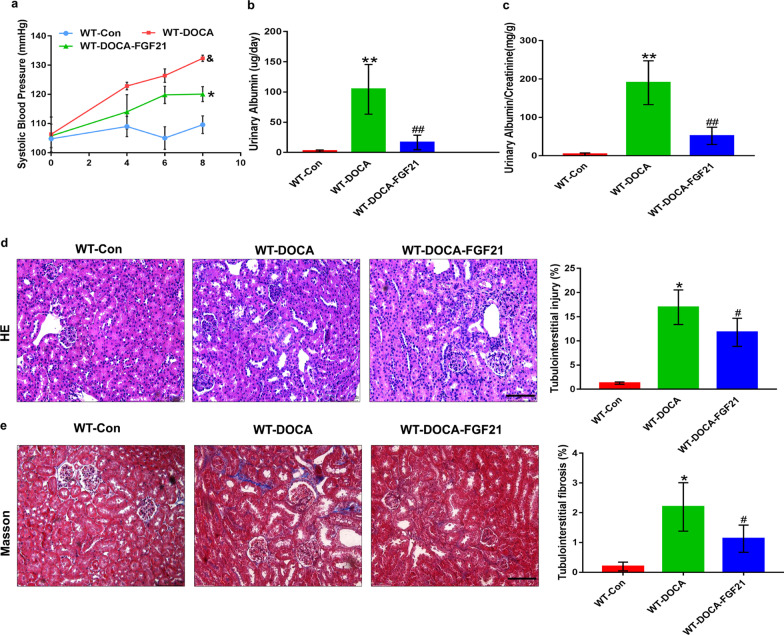Fig. 3.
Replenishment of rhFGF21 effectively protected mice from DOCA-salt-induced renal injury. Eight-week-old male WT mice were randomly divided into three experimental groups: the WT-Control group treated with sham operation, followed by intraperitoneal injection with 0.9% normal saline; the WT-DOCA group treated with DOCA-salt; the WT-DOCA-FGF21 group treated with DOCA-salt, followed by intraperitoneal supplementation of recombinant human FGF21 (rhFGF21, 500 μg/kg/day body weight). After 8 days of intervention, the serum and kidney tissues of mice in each group were harvested for detection. a Systolic blood pressure (mm Hg) was determined at the indicated days (from 0 to 8 day). b and c Urinary albumin (μg/day) and the ratio of urinary albumin/creatinine (mg/g) as indexes of renal function were determined. d Representative images of Hematoxylin–eosin staining in kidney tissues collected at 8 days post-DOCA-salt treatment and quantification of tubulointerstitial injury region using Image-Pro plus 6.0 software. e The levels of fibrosis in kidney tissues harvested at 8 days post-DOCA-salt treatment was determined by Masson's trichrome staining and quantification of fibrotic degree in tubulointerstitium using Image-Pro plus 6.0 software. The values are expressed as the mean ± SD, n = 6 mice/group. *P < 0.05 and **P < 0.01versus the WT control group; #P < 0.05 and ##P < 0.01 versus the WT-DOCA group. Scale bar: 100 μm

